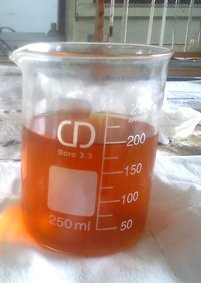Is Methanol Pink?
What You Need to Know About Its Color and Appearance
When someone mentions methanol, “pink” might not be the first thing that comes to mind. In fact, pure methanol is a clear, colorless liquid. However, situations involving additives, contaminants, or chemical interactions can give off a pink hue. This question is more than a curiosity—it’s about understanding methanol’s properties, especially in lab settings where safety and accuracy are essential. Let’s unpack why methanol might appear pink and what it means for its use.
What Is Methanol?
Methanol, also known as wood alcohol, is a simple organic compound with a wide range of uses. While you might not encounter it daily, methanol plays a vital role in various industries, from fuel production to chemical manufacturing. Let’s break it down.
Chemical Composition and Appearance
In its pure form, methanol (CH₃OH) is a clear, colorless liquid. It’s deceptively plain, resembling water at first glance—a fact that can make it dangerous if mishandled. Methanol has a faintly sweet, alcoholic odor, but you can’t rely on smell alone for identification.
Because it’s colorless, any unusual tint, such as a pink hue, typically indicates the presence of additives or contamination. For example, denaturants added to methanol for safety purposes may include dyes, giving it a distinctive color for easier identification. You can learn more about the chemical properties of methanol in this comprehensive resource by DCCEEW.

Common Applications of Methanol
Methanol isn’t just a lab chemical—it’s an incredibly versatile substance. Here are some of its most prominent uses:
- Fuel: Methanol is a common ingredient in biodiesel and can be used as a clean-burning alternative fuel for cars, ships, and even power plants. It’s a go-to for reducing carbon emissions in transportation. Learn more from the Methanol Institute.
- Solvent: Thanks to its ability to dissolve various compounds, methanol is regularly used in paints, coatings, and adhesives.
- Lab Reagent: Methanol’s simplicity makes it an essential reagent for research and industrial processes.
- Chemical Manufacturing: It’s a key ingredient in producing formaldehyde, acetic acid, and many other vital chemicals used in plastics, resins, and textiles. Check out these additional applications on Methanex’s website.
This unassuming liquid is everywhere—hidden in everyday products and critical in reducing environmental impacts. It’s fascinating how methanol shifts between roles, offering both usability and sustainability.
Why Methanol Might Seem Pink
Methanol, a typically colorless liquid, can sometimes surprise you with a pink hue. This change isn’t random—it stems from specific scientific and chemical reasons. Let’s dive into two key explanations: additives and chemical reactions.
The Role of Additives
Additives play a significant role in altering methanol’s appearance. Certain applications require methanol to be easily identifiable to prevent accidents or misuse. In such cases, manufacturers might include dyes.
- Dyes like Methyl Red: Some dyes, such as methyl red, can tint methanol pink under certain conditions. These dyes are often used in lab or industrial settings to signal the substance’s presence or to differentiate it from other chemicals.
- Fuel Additives: Methanol used in vehicle fuels or industrial applications can also contain safety-related additives that alter its color. For example, companies may include dyes designed to make methanol more noticeable in storage tanks or spills (see more in this EPA report).
- Color for Identification: Methanol in consumer-use products like cleaning agents may also include dyes to align with branding or safety policies, as seen with color additives in cosmetics or other items (FDA reference).
These additives serve both a functional and safety purpose, ensuring methanol’s presence is clear, even at a glance.
Chemical Reactions Involving Methanol
Apart from additives, certain chemical reactions can explain why methanol might turn pink. These reactions are mostly influenced by environmental factors or the substances methanol comes into contact with:
- pH Changes and Indicators: When combined with pH-sensitive materials, methanol can produce color shifts. For instance, chemicals like methyl red may cause methanol to take on a pink tone depending on acidity or alkalinity. You can find more details in this scientific article.
- Reaction with Acids or Oxidants: Methanol exposed to hydrochloric acid or other oxidants has been documented to exhibit color changes. In some cases, reactions may generate shades of pink or purple. A comprehensive study on this phenomenon is highlighted in an academic journal.
- Decomposition and Interaction: Methanol can interact with residual compounds like phenols in specific settings, impacting its color under acidic or oxidizing conditions. Research points to this happening more frequently in industrial scenarios (see full study here).
These reactions illustrate how methanol’s composition and interactions can lead to unexpected outcomes. While the pink hue might catch your eye, understanding its root cause often involves a deeper dive into chemistry.
By looking at additives and reactions, we uncover more than just a quirky color change—it reveals the complexity of this fascinating chemical.
Bacteria and Pink-Pigmented Methanol
Some of the most fascinating insights about methanol’s pink transformation stem from a group of bacteria called Pink-Pigmented Facultative Methylotrophs (PPFMs). These microscopic organisms offer a biological perspective on methanol’s interaction with nature.
What Are PPFMs?
PPFMs are a unique class of bacteria that thrive by metabolizing one-carbon compounds like methanol. They earned their name from their pink pigmentation, which is more than just an aesthetic quirk. This rosy hue is thought to protect the bacteria from ultraviolet radiation, acting like natural sunscreen for their DNA. It’s like putting sunglasses on microorganisms—a tiny but essential adaptation for survival.
These bacteria are versatile and widely distributed. You’ll find them in soil, on plant surfaces, and even in water ecosystems. Their ability to survive across several habitats has made them a significant subject of scientific interest. Why? Because they aren’t just freeloaders; they actively contribute to plant health by promoting growth and colonizing stems, leaves, and roots. For an in-depth look at their ecological roles, check out this detailed resource on PPFMs.







